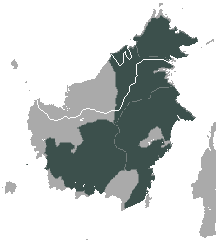Diet
Maroon leaf monkeys are herbivores. Their main diet is fruits, seeds, young leaves, and flowers. They are selective feeders, as food becomes limited they will feed on certain types of plant matter or seeds during their time of abundance. To maintain a balance in their diet, they will consume topsoil from termite mounds. [5]
Their primary food is the young parts of leaves, feeding less frequently on seeds and whole fruits, and occasionally on flowers. Feeding patterns vary seasonally. As the fruit season peaks during June to September, there is an increase of fruit being produced. During this time of abundance, Maroon leaf monkeys feed on large amounts of seeds and fruits. Consumption of young leaves happens primarily from October to June; especially in June. During this dry time of the year, they consume more succulent foliage and are decrease their intake of seeds. Flowers are mostly consumed between March and May. There is only one type of flower that becomes a high-demand resource during December. Food becomes scarce during the rainy season, and at this time of year maroon leaf monkeys feed on mature leaves. [5]
During April, June, and August, maroon leaf monkeys consume the topsoil of termite mounds to obtain the minerals needed for a balanced diet. The termite mound soil has high levels of calcium and magnesium and is also a source of potassium and phosphorus. This soil is very acidic and has a dominant exchange of cations, due to the leaching of aluminium. This may be due to the termite's saliva, since termite soil has a higher nutrient content than the surrounding bed soil. [5]


